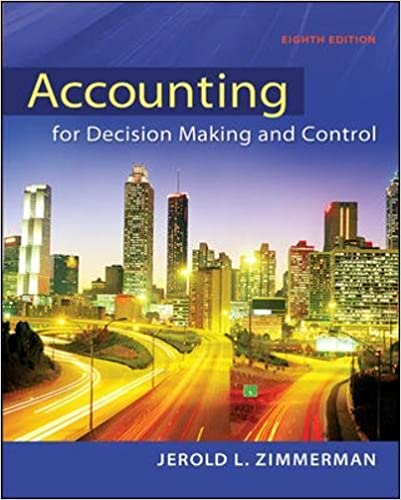
Accounting for Decision Making and Control 8th Edition by Jerold Zimmerman
Edition 8ISBN: 978-0078025747
Accounting for Decision Making and Control 8th Edition by Jerold Zimmerman
Edition 8ISBN: 978-0078025747 Exercise 31
Outback Opals
Outback Opals mines and processes opals from its Australian opal mines. The process consists of removing large chunks of stones, carefully splitting the stones and removing the opals, and then cutting and polishing the stones. Finally, the opals are sorted and graded (I, II, and III). The Grade I opals are sent to Outback's U.S. subsidiary for sale in the United States. The Graded II opals are sold through Outback's Hong Kong subsidiary in Hong Kong, and the Grade III opals are sold in Australia. It costs A$35,000 to mine, cut, polish, and sort a batch of opals. The following table summarizes the number of stones in each batch mined, the additional costs to package and sell each stone after it is polished and graded, the selling price of each grade of stone (in Australian dollars), and the income tax rates that apply to any income derived from stones sold in the country of final sale.
 Required:
Required:
a. Calculate the joint cost per stone of each grade of opal (I, II, and III) using the number of stones in each batch to allocate the A$35,000 joint mining, cutting, polishing, and sorting costs. (Round all decimals to four significant digits.)
b. Calculate the joint cost per stone of each grade of opal (I, II, and III) using the net realizable value of each grade of stones (before taxes) to allocate the A$35,000 joint mining, cutting, polishing, and sorting costs. (Round all decimals to four significant digits.)
c. Which method of allocating the joint cost of A$35,000 (number of stones or net realizable value) should Outback Opals use? Explain why.
Outback Opals mines and processes opals from its Australian opal mines. The process consists of removing large chunks of stones, carefully splitting the stones and removing the opals, and then cutting and polishing the stones. Finally, the opals are sorted and graded (I, II, and III). The Grade I opals are sent to Outback's U.S. subsidiary for sale in the United States. The Graded II opals are sold through Outback's Hong Kong subsidiary in Hong Kong, and the Grade III opals are sold in Australia. It costs A$35,000 to mine, cut, polish, and sort a batch of opals. The following table summarizes the number of stones in each batch mined, the additional costs to package and sell each stone after it is polished and graded, the selling price of each grade of stone (in Australian dollars), and the income tax rates that apply to any income derived from stones sold in the country of final sale.
 Required:
Required: a. Calculate the joint cost per stone of each grade of opal (I, II, and III) using the number of stones in each batch to allocate the A$35,000 joint mining, cutting, polishing, and sorting costs. (Round all decimals to four significant digits.)
b. Calculate the joint cost per stone of each grade of opal (I, II, and III) using the net realizable value of each grade of stones (before taxes) to allocate the A$35,000 joint mining, cutting, polishing, and sorting costs. (Round all decimals to four significant digits.)
c. Which method of allocating the joint cost of A$35,000 (number of stones or net realizable value) should Outback Opals use? Explain why.
Explanation
Process costing:
Process costing is a...
Accounting for Decision Making and Control 8th Edition by Jerold Zimmerman
Why don’t you like this exercise?
Other Minimum 8 character and maximum 255 character
Character 255


